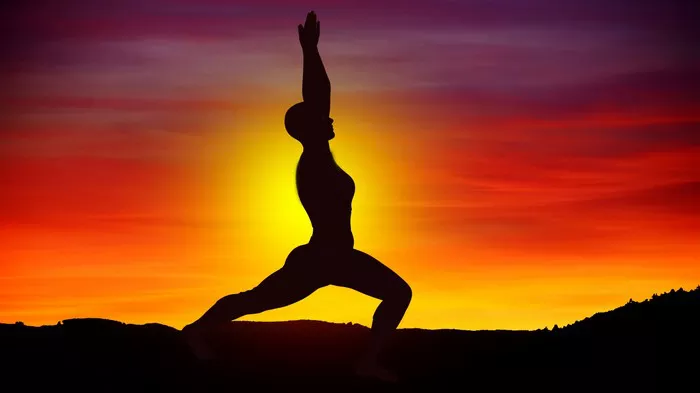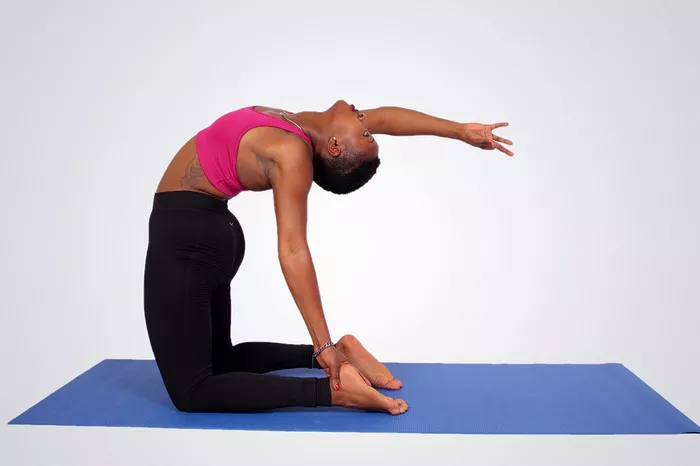Strala Yoga, a unique and dynamic form of yoga, has been making waves in the wellness community for its innovative approach to traditional yoga practices. Combining elements of Tai Chi, Traditional Chinese Medicine, and a relaxed attitude towards movement, Strala Yoga emphasizes ease and flow over rigidity and structure. This article explores the origins, principles, benefits, and practice of Strala Yoga, providing a comprehensive understanding of this transformative approach to health and well-being.
The Origins of Strala Yoga
Strala Yoga was founded by Tara Stiles, a former model and classically trained dancer, and her partner, Mike Taylor. Dissatisfied with the often rigid and prescriptive nature of conventional yoga classes, Stiles sought to create a form of yoga that was more accessible and intuitive. She envisioned a practice that would allow individuals to connect with their bodies in a natural and enjoyable way, free from the pressure of achieving perfect postures.
In 2008, Strala Yoga was born. The name “Strala” is derived from the Swedish word “stråla,” meaning “to radiate light.” This name reflects the core philosophy of Strala Yoga: to radiate positive energy and encourage a state of ease and well-being. Strala Yoga quickly gained popularity, attracting a diverse community of practitioners ranging from complete beginners to seasoned yogis.
Principles of Strala Yoga
Strala Yoga is built upon several key principles that set it apart from other yoga styles. These principles emphasize a holistic approach to movement, mindfulness, and well-being.
1. Ease and Flow: Central to Strala Yoga is the concept of moving with ease. Rather than striving for perfection in each pose, practitioners are encouraged to find their own flow, moving in a way that feels natural and comfortable. This approach reduces the risk of injury and fosters a sense of joy and relaxation.
2. Natural Movement: Strala Yoga incorporates principles from Tai Chi and Traditional Chinese Medicine, emphasizing natural, fluid movements. This focus on natural movement helps to improve flexibility, balance, and coordination, while also promoting a deep sense of connection between mind and body.
3. Breath-Body Connection: Strala Yoga places a strong emphasis on the connection between breath and movement. Practitioners are encouraged to use their breath to guide their movements, creating a seamless and meditative practice that enhances mindfulness and reduces stress.
4. Accessibility: One of the primary goals of Strala Yoga is to make yoga accessible to everyone, regardless of age, fitness level, or experience. Classes are designed to be inclusive and adaptable, allowing each individual to move at their own pace and find their own expression of each pose.
5. Community and Support: Strala Yoga fosters a sense of community and support among practitioners. Classes are often taught in a group setting, with a focus on collaboration and mutual encouragement. This supportive environment helps to build confidence and fosters a sense of belonging.
The Practice of Strala Yoga
Strala Yoga classes are characterized by their fluid and relaxed approach. A typical class begins with a gentle warm-up, designed to prepare the body for movement and to cultivate a state of relaxation and mindfulness. This is followed by a series of flowing sequences, where each movement is guided by the breath and performed with ease.
The sequences in Strala Yoga are often inspired by natural movements and everyday activities. For example, a sequence might mimic the fluidity of swimming or the grace of a dance. This approach helps to make the practice feel intuitive and enjoyable, while also providing a full-body workout.
One of the unique aspects of Strala Yoga is its emphasis on creativity and individuality. Practitioners are encouraged to explore different variations of each pose and to find their own expression of the movements. This freedom to experiment and play fosters a deeper connection with the body and enhances the overall enjoyment of the practice.
Benefits of Strala Yoga
Strala Yoga offers a wide range of benefits, both physical and mental. By focusing on ease and natural movement, this practice helps to improve overall health and well-being in several key areas.
Physical Benefits:
1. Improved Flexibility: The fluid movements and emphasis on natural range of motion help to increase flexibility and reduce stiffness in the muscles and joints.
2. Enhanced Strength: Strala Yoga involves a variety of weight-bearing poses and movements that help to build strength in the muscles, particularly in the core, arms, and legs.
3. Better Balance and Coordination: The practice’s focus on fluidity and natural movement helps to improve balance and coordination, reducing the risk of falls and injuries.
4. Increased Energy: The emphasis on breath and movement helps to increase circulation and oxygenation of the body, leading to higher energy levels and reduced fatigue.
Mental and Emotional Benefits:
1. Reduced Stress and Anxiety: The meditative nature of Strala Yoga, combined with its emphasis on breath-body connection, helps to reduce stress and anxiety, promoting a state of calm and relaxation.
2. Improved Mental Clarity: The mindfulness cultivated during Strala Yoga practice can enhance mental clarity and focus, helping practitioners to feel more present and aware in their daily lives.
3. Boosted Mood: The enjoyable and playful nature of Strala Yoga can help to lift the mood and foster a sense of joy and well-being.
4. Enhanced Self-Awareness: By encouraging practitioners to listen to their bodies and move in a way that feels natural, Strala Yoga helps to cultivate a deeper sense of self-awareness and self-acceptance.
Strala Yoga for Different Populations
One of the strengths of Strala Yoga is its adaptability to different populations. Its principles and practices can be modified to suit a wide range of individuals, making it an inclusive and versatile form of exercise.
1. Beginners: Strala Yoga is particularly well-suited for beginners due to its emphasis on ease and accessibility. The lack of rigid postures and the encouragement to move at one’s own pace make it a welcoming entry point for those new to yoga.
2. Seniors: The gentle and fluid nature of Strala Yoga makes it an excellent choice for seniors. The focus on balance, flexibility, and natural movement can help to improve overall mobility and reduce the risk of falls and injuries.
3. Athletes: Athletes can benefit from Strala Yoga’s emphasis on flexibility, strength, and coordination. The practice can complement other forms of training by improving overall body awareness and reducing the risk of injury.
4. Individuals with Chronic Conditions: Strala Yoga’s adaptable and gentle approach can be beneficial for individuals with chronic conditions such as arthritis, fibromyalgia, and chronic pain. The emphasis on breath and movement can help to reduce symptoms and improve overall quality of life.
Strala Yoga and Holistic Health
Strala Yoga is more than just a physical exercise; it is a holistic approach to health and well-being. By integrating principles from various wellness traditions, Strala Yoga offers a comprehensive practice that addresses the physical, mental, and emotional aspects of health.
1. Mindfulness and Meditation: The meditative aspects of Strala Yoga help to cultivate mindfulness, which has been shown to reduce stress, improve mental clarity, and enhance emotional well-being. The focus on breath and movement creates a moving meditation that can be deeply calming and centering.
2. Energy Flow: Inspired by Traditional Chinese Medicine, Strala Yoga emphasizes the flow of energy (Qi) throughout the body. By promoting natural movement and reducing tension, the practice helps to enhance the free flow of energy, contributing to overall vitality and health.
3. Connection to Nature: Strala Yoga often incorporates imagery and movements inspired by nature, fostering a sense of connection to the natural world. This connection can enhance feelings of peace and grounding, contributing to overall well-being.
4. Community and Social Support: The community-oriented nature of Strala Yoga classes fosters a sense of belonging and social support. Building connections with others can enhance emotional well-being and provide a sense of shared purpose and encouragement.
The Future of Strala Yoga
As Strala Yoga continues to grow in popularity, it is poised to make a significant impact on the wellness community. Its emphasis on ease, accessibility, and holistic health aligns with current trends towards more inclusive and integrative approaches to well-being.
1. Expanding Reach: Strala Yoga is likely to reach an even broader audience as more people seek out accessible and enjoyable forms of exercise. Online classes and resources make it possible for individuals around the world to experience the benefits of Strala Yoga from the comfort of their own homes.
2. Integration with Healthcare: There is potential for Strala Yoga to be integrated into healthcare settings as a complementary therapy. Its gentle and adaptable approach makes it suitable for individuals with a wide range of health conditions, and its focus on holistic health aligns with integrative medicine practices.
3. Ongoing Innovation: As a dynamic and evolving practice, Strala Yoga will continue to innovate and adapt. New sequences, techniques, and approaches will emerge, keeping the practice fresh and relevant for practitioners of all levels.
Conclusion
Strala Yoga represents a refreshing and transformative approach to yoga and wellness. By emphasizing ease, natural movement, and holistic health, it offers a practice that is accessible, enjoyable, and deeply beneficial. Whether you are a seasoned yogi or a complete beginner, Strala Yoga provides a path to improved physical health, mental clarity, and emotional well-being. As this innovative practice continues to grow and evolve, it holds the promise of making a lasting impact on the way we approach health and wellness.




















